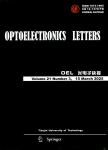版权所有:内蒙古大学图书馆 技术提供:维普资讯• 智图
内蒙古自治区呼和浩特市赛罕区大学西街235号 邮编: 010021

作者机构:Tianjin Key Laboratory of Intelligent Control of Electrical EquipmentSchool of Artificial IntelligenceTiangong UniversityTianjin300387China Tianjin Key Laboratory of Intelligent Control of Electrical EquipmentSchool of Control Science and EngineeringTiangong UniversityTianjin300387China
出 版 物:《Optoelectronics Letters》 (光电子快报(英文版))
年 卷 期:2022年第18卷第10期
页 面:613-617页
核心收录:
学科分类:080704[工学-流体机械及工程] 08[工学] 080203[工学-机械设计及理论] 0807[工学-动力工程及工程热物理] 0802[工学-机械工程]
基 金:supported by the National Natural Science Foundation of China(Nos.51806150 and 61905178) the Program for the Research Project of Tianjin Municipal Education Committee(No.2019KJ020) the Science and Technology Guiding Project of China Textile Industry Federation(No.2018086)
摘 要:For particle image velocimetry(PIV) technique, the two-dimensional(2D) PIV by one camera can only obtain 2D velocity field, while three-dimensional(3D) PIV based on tomography by three or four cameras is always complex and expensive. In this work, a binocular-PIV technology based on two cameras was proposed to reconstruct the 3D velocity field of gas-liquid two-phase flow, which is a combination of the binocular stereo vision and cross-correlation based on fast Fourier transform(CC-FFT). The depth of particle was calculated by binocular stereo vision on space scale, and the plane displacement of particles was acquired by CC-FFT on time scale. Experimental results have proved the effectiveness of the proposed method in 3D reconstruction of velocity field for gas-liquid two-phase flow.